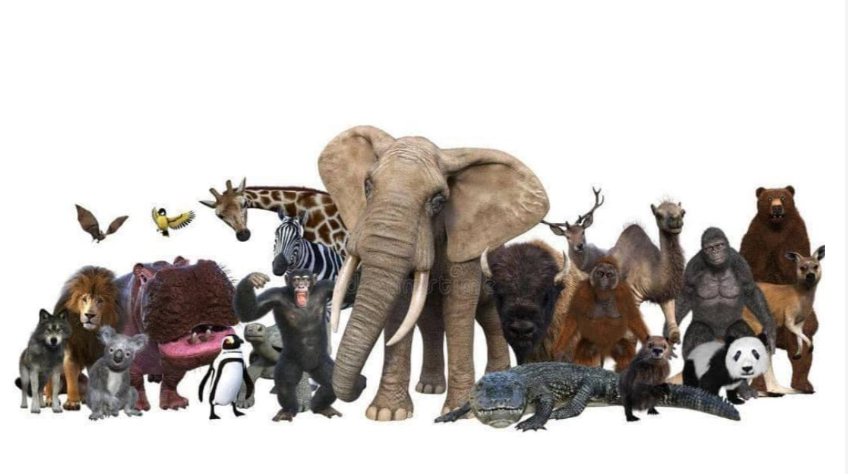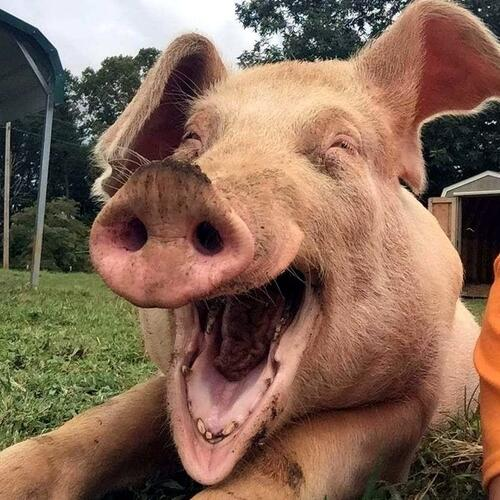There are certain simple abilities that we humans take for granted, like the ability to look up and gaze at the sky. But did you know that not all animals have this freedom? One such creature is the pig. Surprisingly, pigs cannot lift their heads to look up at the sky due to their unique anatomy. In this article, we’ll dive into the reasons why pigs are physically unable to raise their heads, and explore how they’ve adapted to work around this limitation.
Why Pigs Can’t Look Up: Anatomical Restrictions

Pigs are fascinating animals, but they come with some physical limitations that make them unique. The main reason pigs can’t look directly up at the sky is due to the anatomy of their necks and spines.
- Neck Structure: Pigs have relatively short, stiff necks, and their muscles are designed to move primarily forward or downward to help them root and forage for food on the ground. Unlike humans or many other animals, their neck muscles don’t offer much flexibility for upward movement.
- Spinal Flexibility: The curvature of a pig’s spine also restricts their ability to raise their heads high enough to see above them. Unlike some animals that have elongated, flexible necks (think giraffes or birds), pigs have a rigid spine that prioritizes strength over flexibility.
Eye Positioning: Another Reason Pigs Can’t Look Up
Another key factor preventing pigs from looking up at the sky is the position of their eyes. Pigs have their eyes located on the sides of their heads, which is common among prey animals. This positioning serves an important purpose:
- Panoramic View: Pigs have a wide field of vision—about 310 degrees—which helps them stay alert to predators. However, this panoramic view comes at a cost.
- Blind Spots: Due to the positioning of their eyes, pigs have two major blind spots: one directly in front of their snouts and one directly above their heads. This is why it’s physically impossible for them to tilt their heads and look straight up at the sky.
Do Pigs Ever See the Sky?
Just because pigs can’t tilt their heads upward doesn’t mean they never see the sky. Pigs have found clever ways to get around their physical limitations and view things that are above their natural line of sight.
- Lying on Their Backs: One of the most common ways pigs can see the sky is by lying on their backs. When they roll around on the ground or stretch out, they naturally expose their bellies and can catch a full view of the sky above. So, while they might not be able to stand and look up like we do, they have their own method of sky-gazing!
- Sidelong Glances: Pigs can also observe things above their heads by positioning themselves at an angle. For example, if there’s something tall nearby that they want to see, they’ll move farther away and look up from the side. This way, they can glance at the object without needing to fully tilt their heads upward.
How Pigs’ Anatomy Suits Their Lifestyle
It may seem limiting that pigs can’t look directly upward, but this anatomical restriction is actually well-suited to their lifestyle and survival. Let’s explore how their body design benefits them in other ways:

- Foraging Efficiency: Pigs spend most of their time foraging for food, which is why their neck and spine are designed to support downward and forward movement. This allows them to use their strong snouts to dig into the ground and find food.
- Survival and Awareness: With their eyes positioned on the sides of their heads, pigs can keep watch for potential predators while foraging. Their wide field of vision allows them to remain alert, despite the fact that they can’t see directly above them.
Are Pigs the Only Animals That Can’t Look Up?
Interestingly, pigs aren’t the only animals with physical limitations when it comes to vision. Several animals have evolved specific traits that restrict their ability to look in certain directions:
- Cows: Cows, like pigs, are limited in their ability to tilt their heads upward due to the shape of their necks. However, cows can see a wide range around them thanks to their side-positioned eyes.
- Rabbits: Similarly, rabbits can’t look up easily without moving their entire heads. Their eyes are also positioned to give them a wide field of vision, which helps them avoid predators, but limits their ability to look upward.
While each of these animals has limitations, they’ve also developed ways to compensate for these restrictions, just like pigs have.
Adaptations That Help Pigs Thrive

Despite their inability to look directly upward, pigs are highly adaptable animals. Their strong snouts and acute sense of smell help them find food buried deep in the ground, and their impressive field of vision gives them an advantage when it comes to detecting movement around them.
- Intelligent Behaviors: Pigs are known for their intelligence and problem-solving abilities. They can quickly learn new tasks and adapt to their environments, making them one of the most cognitively advanced farm animals.
- Social Awareness: Pigs are also very social creatures. Their ability to stay aware of their surroundings, even without being able to look up, helps them interact with other pigs and avoid danger.
Conclusion: Pigs’ Unique View of the World
In the end, pigs may not have the ability to look directly up at the sky, but they have adapted to live efficiently with this limitation. Their physical structure, from their neck and spine to their eye positioning, reflects their lifestyle as foragers and prey animals. While they may not experience the world in the same way humans do, pigs have found creative ways to view the sky and the world around them.
It’s a reminder that even animals with seemingly odd limitations have evolved perfectly for their environment. Pigs may never look up and see the sky in the way we do, but their world is no less vibrant because of it.


